Shopify Email Contact: Best Practices for Customer Support

At Drop Cowboy, we know that effective customer support is crucial for e-commerce success. Shopify email contact is a powerful tool for addressing customer inquiries and building lasting relationships.
In this post, we’ll share best practices to help you optimize your Shopify email support system. From setting up your email infrastructure to crafting personalized responses, we’ll cover everything you need to know to elevate your customer service game.
How to Set Up Your Shopify Email Support System
Choose a Robust Email Provider
To create an effective email support system for your Shopify store, start with a powerful email provider that integrates well with Shopify. Gmail for Business or Microsoft Outlook (both known for their reliability and advanced features) are excellent options.
Create Dedicated Support Email Addresses
Organize your support structure by creating specific email addresses for different functions:
- support@yourdomain.com for general inquiries
- returns@yourdomain.com for product returns
- billing@yourdomain.com for payment issues
This structure routes inquiries to the right team members and streamlines your support process.
Set Up Auto-Responders
Auto-responders are essential for managing customer expectations. Implement an immediate response that acknowledges receipt of the customer’s email and provides an estimated response time. For example:
“We’ve received your message and will respond within 24 hours.”
This simple step can boost customer satisfaction significantly.
Develop Email Templates
Create a library of email templates for common inquiries. These should address frequently asked questions about:
- Shipping
- Returns
- Product information
- Account management
Personalize these templates with merge tags to automatically include the customer’s name and order details. This approach saves time and maintains consistency in your responses.
Implement a Review Process
Set up a system to regularly review and update your email support processes. As your business expands, you might need to adjust your procedures or add new dedicated email addresses to handle increased volume or specialized inquiries.
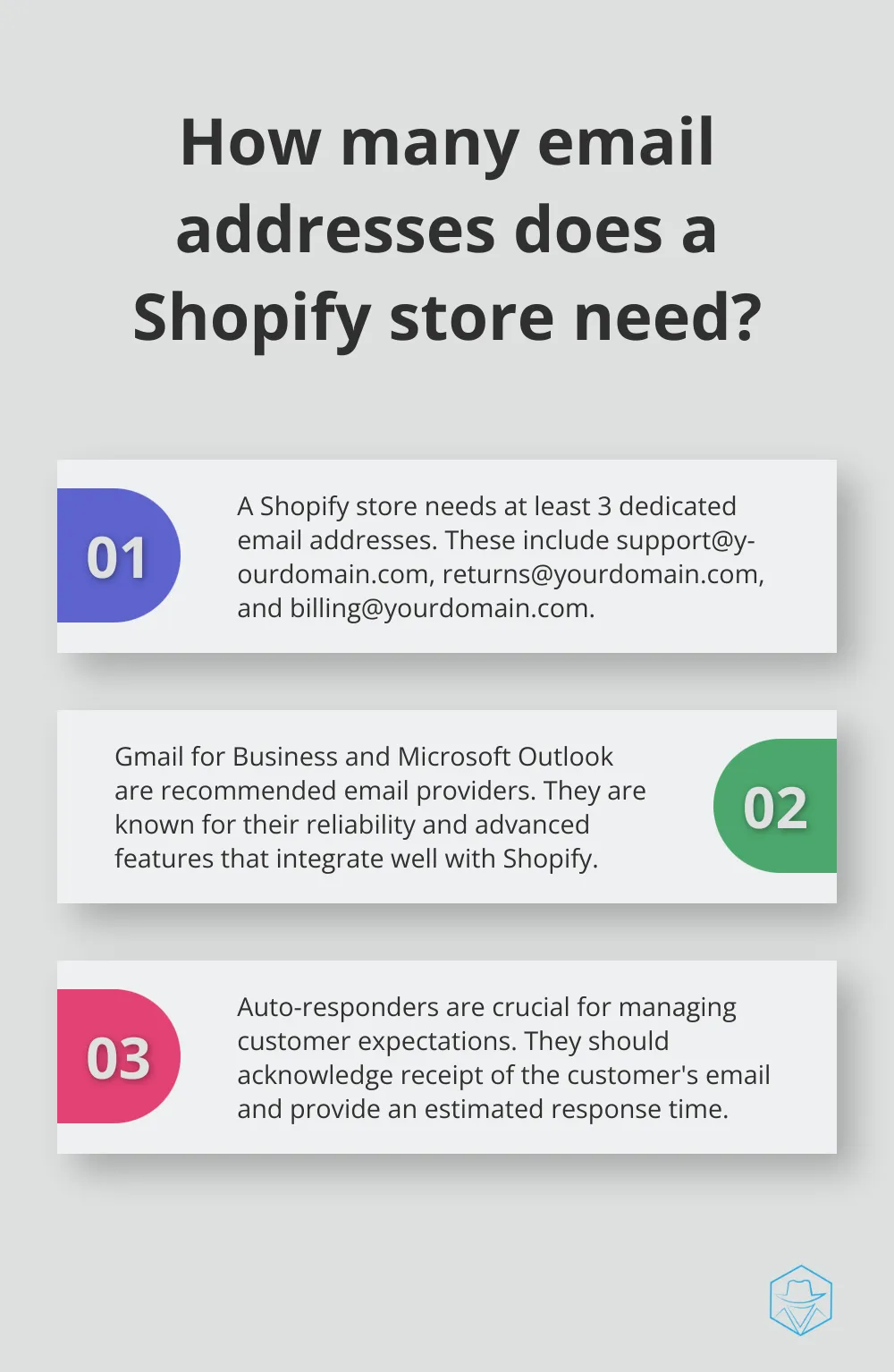
Now that you’ve set up a solid foundation for your Shopify email support system, it’s time to focus on crafting effective customer support emails. The next section will guide you through best practices for composing emails that resonate with your customers and solve their issues efficiently.
How to Write Effective Support Emails
Strike the Right Tone
The tone of your email sets the stage for the entire interaction. Try to balance professionalism and friendliness. Start with a warm greeting using the customer’s name, and maintain a positive, solution-oriented tone throughout the email. Instead of saying “We can’t do that,” opt for “Here’s what we can do to help.”
Keep It Clear and Concise
Customers appreciate straightforward communication. Address their specific concern in the first sentence or two. Use short paragraphs and simple language to explain solutions or next steps. Avoid technical jargon (unless you’re sure the customer understands it).
Personalize Each Response
Generic responses can make customers feel unvalued. Read through the customer’s email carefully and address each point they’ve raised. Reference specific details from their order or previous interactions to show that you’re paying attention. This personal touch can transform a standard support interaction into a memorable customer experience.
Provide Actionable Solutions
Every support email should leave the customer with a clear understanding of what happens next. If you solve their problem immediately, explain exactly what you’ve done. If further steps are needed, outline them clearly. For instance, “I’ve initiated a refund for your order #12345. You’ll see the credit on your account within 3-5 business days.”
Use Templates Wisely
While templates can save time, they shouldn’t replace personalized responses. Use templates as a starting point (not a crutch) and customize them for each customer’s unique situation. This approach combines efficiency with a personal touch.
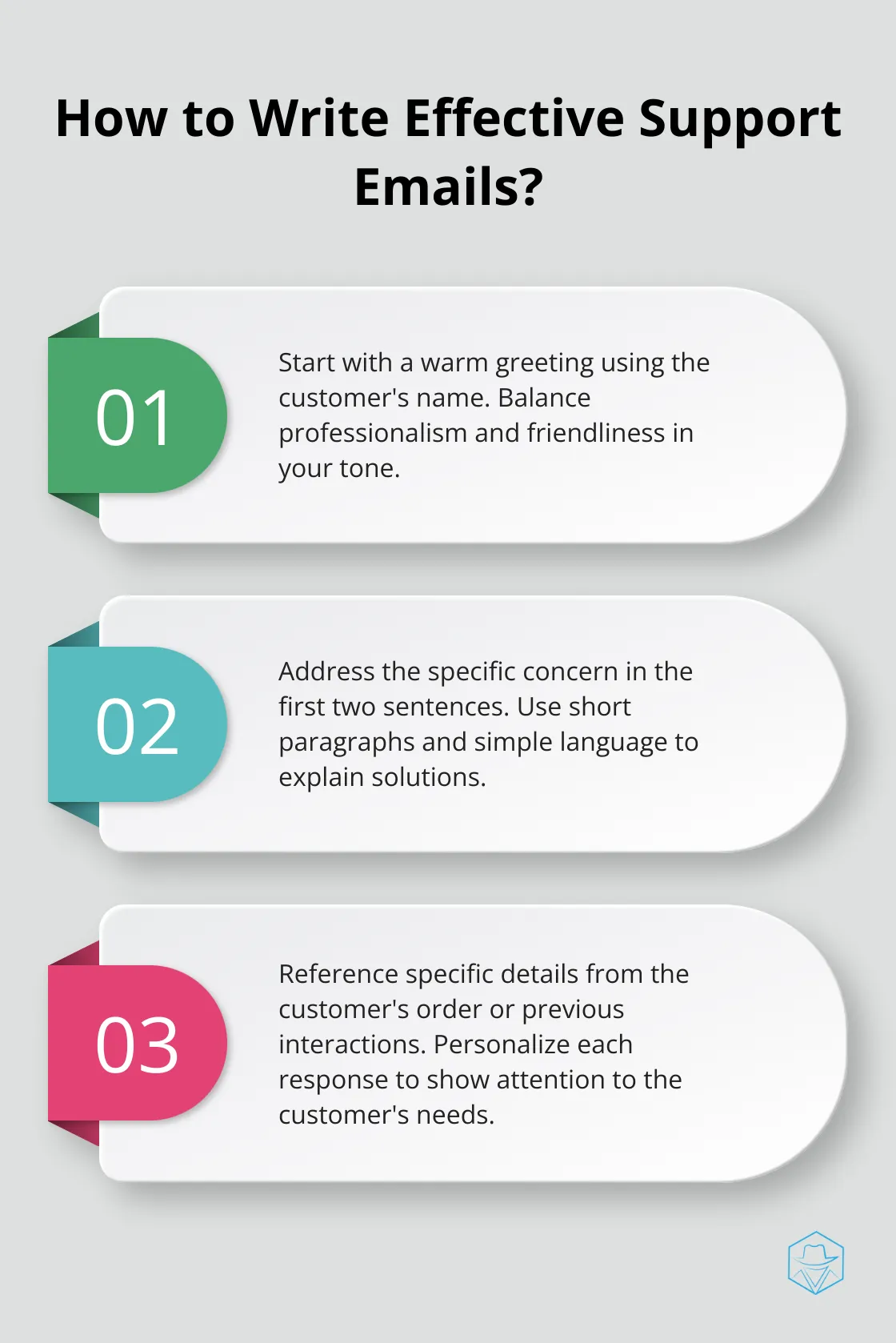
The art of crafting effective support emails involves more than just solving problems. It’s about building relationships and turning potentially negative experiences into positive ones. As we move forward, we’ll explore how to manage your customer support workflow efficiently to ensure no customer falls through the cracks.
How to Streamline Your Customer Support Workflow
Implement a Robust Ticketing System
A ticketing system organizes customer support operations. It sorts incoming requests, assigns them to appropriate team members, and monitors progress. Shopify integrates with various ticketing systems (like Zendesk or Freshdesk). These tools categorize issues, set priorities, and ensure every customer query receives attention.
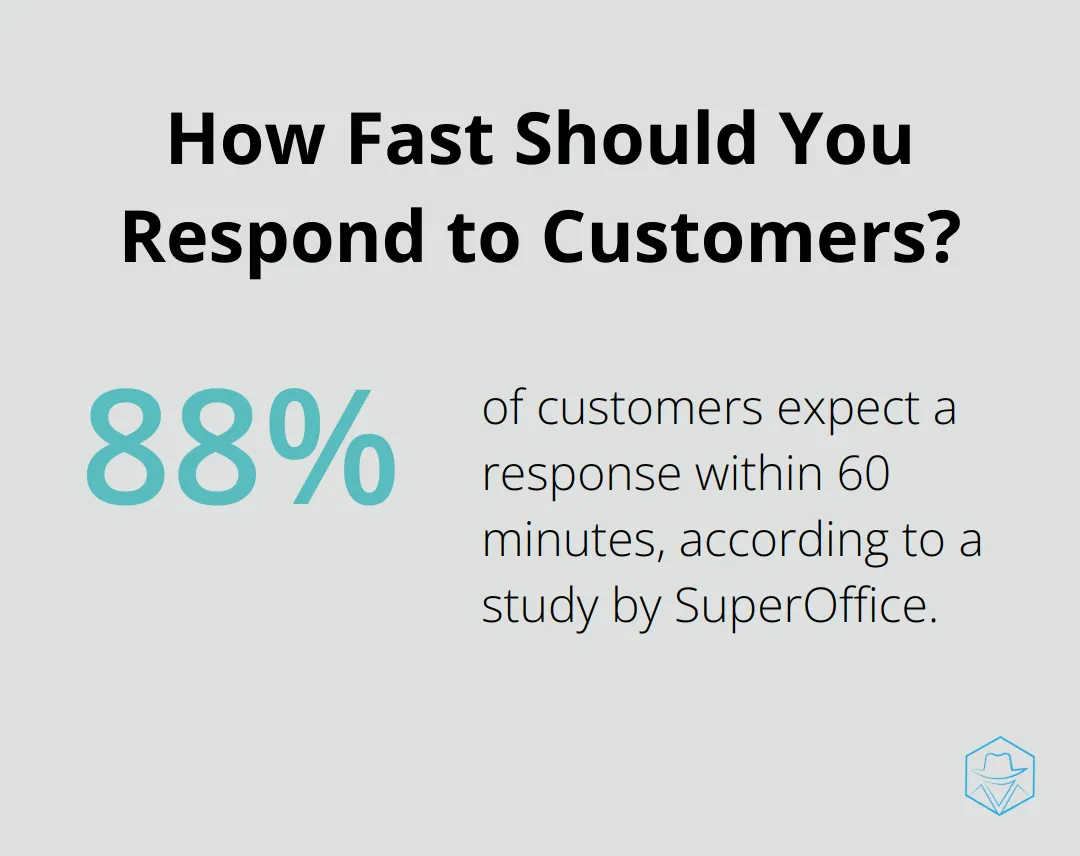
For instance, when a customer emails about a delayed shipment, the system creates a ticket, assigns it to the shipping department, and sets a priority based on the order date. This approach reduces response times and improves efficiency.
Prioritize and Categorize Support Issues
Customer issues vary in urgency. Develop a clear system to prioritize tickets based on importance and impact:
- High Priority: Order cancellations, payment issues, wrong items shipped
- Medium Priority: Product inquiries, shipping status updates
- Low Priority: General feedback, non-urgent questions
This prioritization ensures critical issues receive immediate attention while maintaining a steady workflow for all inquiries.
Set and Monitor Response Time Goals
Clear response time goals maintain customer satisfaction. A study by SuperOffice found that 88% of customers expect a response within 60 minutes. Set realistic targets for your team:
- Acknowledge all tickets within 2 hours
- Resolve high-priority issues within 4 hours
- Address all tickets within 24 hours
Monitor these metrics regularly and adjust your staffing or processes if you consistently miss targets. Tools like Gorgias or Shopify’s native analytics help track these KPIs effectively.
Automate Routine Tasks
Automation streamlines support processes. Use auto-responders to acknowledge receipt of customer emails. Create canned responses for common inquiries to save time. Implement chatbots to handle simple questions, freeing up your team to focus on complex issues.
Train and Empower Your Support Team
A well-trained support team forms the backbone of efficient customer service. Provide regular training on product knowledge, communication skills, and problem-solving techniques. Empower your team to make decisions and resolve issues without constant supervision. This approach reduces escalations and improves resolution times.
Marketing automation can also play a crucial role in streamlining customer support workflows, helping to boost engagement and efficiently manage customer interactions.
Final Thoughts
Effective Shopify email contact management forms the foundation of successful e-commerce customer support. We implement strategies that address customer concerns promptly and build lasting relationships. Our well-structured email system, personalized communication, and efficient workflow management create exceptional customer support experiences.
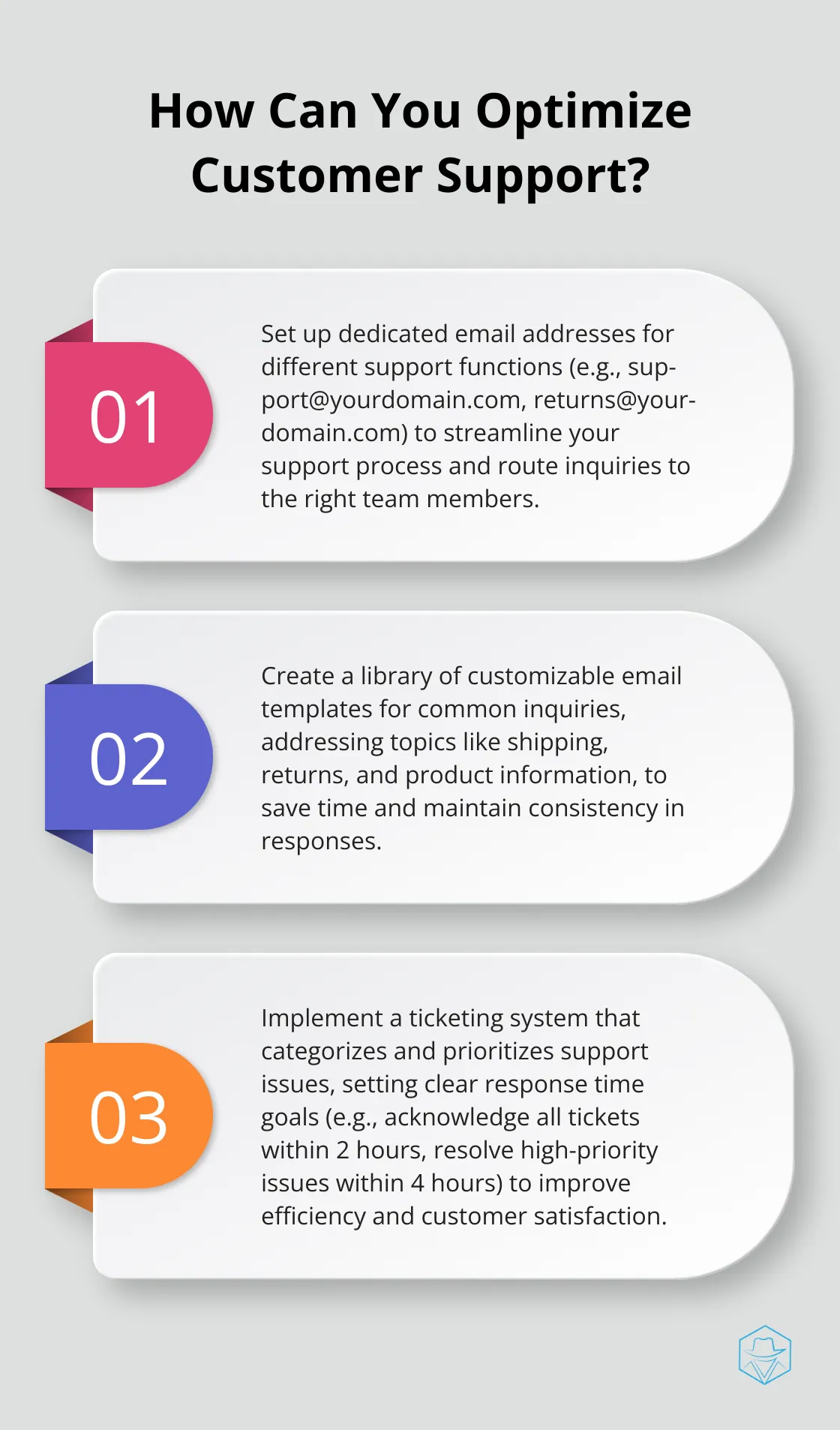
A streamlined workflow (supported by a ticketing system and clear prioritization) ensures we address every customer inquiry. We set and monitor response time goals to keep our team accountable and our customers satisfied. Customer support evolves constantly, so we continuously improve our processes and stay updated on the latest e-commerce customer service techniques.
We complement our email support with other communication channels to enhance overall customer engagement. Drop Cowboy offers innovative solutions like ringless voicemail and SMS marketing that can boost your customer interaction strategy. Our commitment to quality support drives customer satisfaction, fosters loyalty, and contributes to the growth of your Shopify store.
blog-dropcowboy-com
Related posts

May 6, 2025
Marketing Automation Consulting: Expert Advice
Boost your strategy with expert marketing automation consulting. Discover effective tips and insights for optimizing your campaigns.
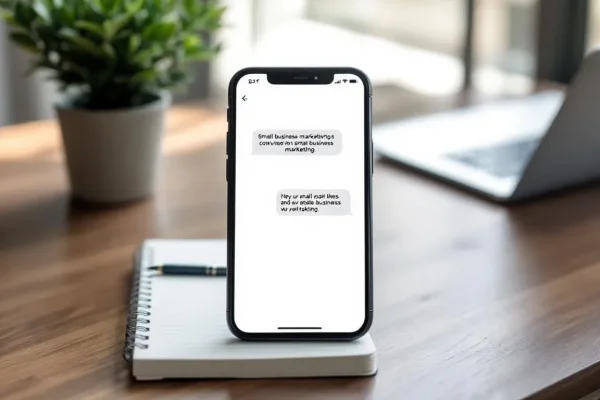
February 28, 2025
How to Leverage Text Marketing for Small Businesses
Boost sales with small business text marketing. Reach more customers, engage effectively, and drive growth through proven strategies and practical tips.

March 26, 2025
HubSpot or Zoho: Choosing the Best CRM Platform
Compare HubSpot vs Zoho to find the best CRM platform for your business needs. Explore features, pricing, and user reviews in our detailed analysis.

June 6, 2025
Automobile CRM: Drive Sales in the Automotive Industry
Boost automotive sales with effective Automobile CRM tools. Discover strategies, insights, and trends to enhance your dealership’s customer management.

June 27, 2025
Parallel Dialer: Maximize Your Calling Capacity
Boost efficiency with a parallel dialer. Maximize your calling capacity and connect with more leads effortlessly. Discover practical tips and tools here.

June 16, 2025
Kixie Dialer: Supercharge Your Sales Calls
Boost sales calls with Kixie Dialer! Discover proven tips and tools for enhancing efficiency and closing more deals effectively.